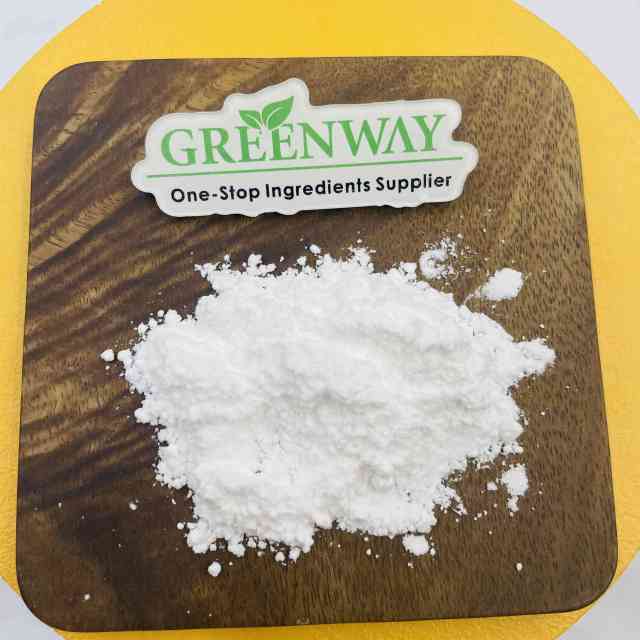
Azelaic acid inhibits or kills anaerobic and aerobic bacteria on the skin. In vivo test shows that topical application of azelaic acid cream for 2 to 3 months can significantly reduce the number of bacteria in the skin and Propionibacterium in the hair follicle, indicating that this product has direct antibacterial effect. In addition, topical application of azelaic acid reduces the composition of free fatty acids and lipids on the skin surface. It shows anti-keratinization effect on the skin of normal people or acne patients, and its principle of action is mainly due to reducing the synthesis of filamentous keratin, thereby reducing the hyperkeratosis of hair follicles. Azelaic acid selectively acts on abnormal melanocytes and inhibits their overactivity. Therefore, topical application of azelaic acid for a long time can reduce the production of skin melanin in patients with age spots. Azelaic acid also has anti-cell proliferation and anti-cytotoxic effects, and its principle of action is mainly through the destruction of mitochondrial respiratory pathways and cellular DNA synthesis.
| Product Name | Azelaic Acid |
| Appearance | White Powder |
| Specification | 99% |
| CAS | 123-99-9 |
| Package | 1kg/aluminum foil bag; 25kg/drum |
| Sample | Available |
| Storage | Dry Place |
| Shelf life | 2 Years |
1. Can be used for freckle and acne removal at the same time
2. It can be used in cosmetics and medicines at the same time.
3. It has excellent functionality (as a raw material for freckle and acne removal in the authoritative dermatological pharmacopoeia), but it has very good safety.
4. The whitening effect of ordinary skin is not very obvious, but it has a very obvious effect on severe pigmentation, such as freckles, chloasma, melanosis, etc.
5. Very stable (no unsaturated double bonds in the molecular structure), different from general functional raw materials
Azelaic acid, has a chemical structure of HOOC(CH2)7COOH, which is a naturally occurring saturated dicarboxylic acid containing nine carbon atoms.
1. Dissolving, dispersing and adding concentration
The biggest inconvenience in application of azelaic acid is that it is insoluble in water and oil under normal conditions. In the past medical applications of azelaic acid were dispersed in the emulsification system with a concentration ratio of 10-20%, which was basically completely insoluble, which was not conducive to the full play of the effect of azelaic acid, and also made the emulsion rough and not delicate. At present, there are cosolvents with very high safety and good solubility, cosol, and the solubility is greatly increased by dozens to hundreds of times. There is no detailed medical clinical report on how much the increase in solubility improves the effect. In the past, it was mostly used in the concentration of 15-20% for acne, and 10-20% in clinical medicine for freckle removal; there are also low-concentration applications (Allergan 1% lotion in the United States). Due to the use of solubilizing and synergistic agents, the solubility is greatly improved. At the same time, because a variety of compound synergies are often used in cosmetic freckle removal, it can be used at a concentration of about 2-5%; the concentration of acne removal can be used at about 4-10%. The optimal addition amount of azelaic acid needs to be explored in application.
2. Irritability and pH
The irritation of azelaic acid was felt in the past, mainly because the purity of azelaic acid was not high (usually 90%) and the pH value was not adjusted. Azelaic acid is slightly soluble in water, with a pH value of about 3.6. For acne removal, there is a certain tingling sensation due to skin trauma. It is best to adjust the pH value to about 5.5; for acne removal, weak acidity causes slight keratin loosening. Conducive to the absorption of active ingredients, the PH value can be about 4.5.
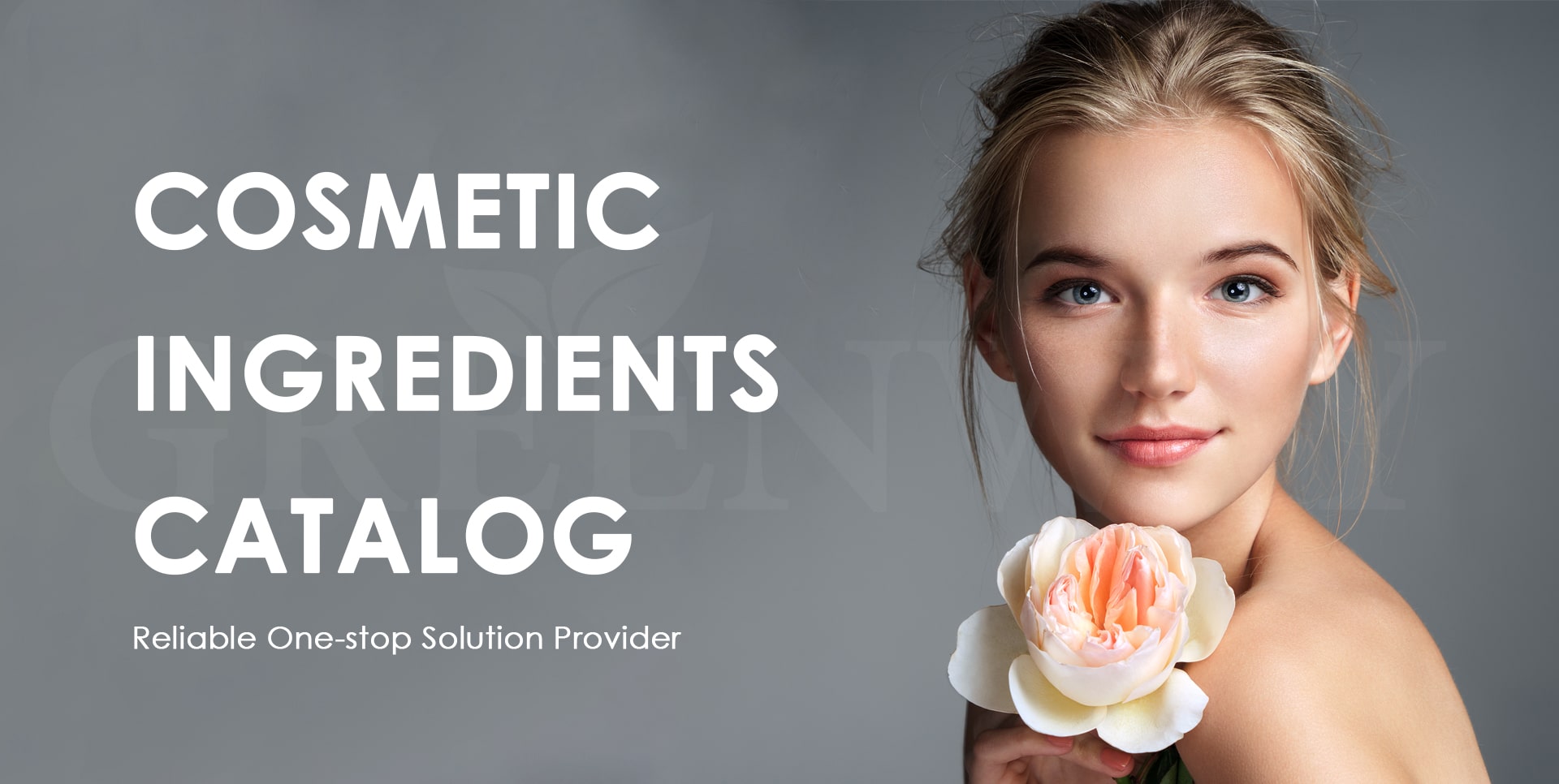 |
||||||||
| Whitening Agents Browse our wide selection active whitening ingredients |
||||||||
| Abstract Skin whitening products are commercially available for cosmetic purposes in order to obtain a lighter skin appearance. They are also utilized for clinical treatment of pigmentary disorders such as melasma or postinflammatory hyperpigmentation. |
Whitening agents act at various levels of melanin production in the skin. Many of them are known as competitive inhibitors of tyrosinase, the key enzyme in melanogenesis. |
|||||||
| Cas No. | Product Name | Cas No. | Product Name | |||||
| 183476-82-6 | VC-IP/Ascorbyl Tetraisopalmitate | 1077-28-7 | A-Lipoic Acid | |||||
| 84380-01-8 | Alpha Arbutin | 305-84-0 | Carnosine | |||||
| 497-76-7 | Beta Arbutin | 497-30-3 | Ergothioneine | |||||
| 53936-56-4 | Deoxyarbutin | 175357-18-3 | Undecylenoyl Phenylalanine/Sepiwhite MSH | |||||
| 501-30-4 | Kojic Acid | 331-39-5 | Caffeic acid | |||||
| 79725-98-7 | Kojic Acid Dipalmitate | 86404-04-8 | 3-o-ethyl ascorbic acid | |||||
| 123-31-9 | Hydroquinone | 103-16-2 | Monobenzone | |||||
| 1105025-85-1 | Dimethymethoxyl Chromanyl Palmitate | 114040-31-2 | Magnesium Ascorbyl Phosphate | |||||
| 1197-18-8 | Tranexamic Acid | 66170-10-3 | Sodium Ascorbyl Phosphate | |||||
| 922165-31-9 | Neosolue-aqulio | 123-99-9 | Azelaic Acid | |||||
| 96702-03-3 | Ectoin | 84696-21-9 | Hydrocotyle Asiatica Extract | |||||
| 83923-51-7 | Dimethylmethoxy Chromanol | 90-64-2 | Mandelic acid | |||||
| 79-14-1 | Glycolic Acid | 73-31-4 | Melatonin | |||||
| 7402-28-0 | 1,4-Dipropionyloxybenzene | 152312-71-5 | Potassium 4-Methoxysalicylate/4-MSK | |||||
| 1077-28-7 | A-Lipoic Acid | 129499-78-1 | Ascorbyl Glucoside/AA2G | |||||
| 305-84-0 | Carnosine | 69-72-7 | Salicylic Acid/BHA | |||||
| 497-30-3 | Ergothioneine | - | Alpha Hydroxy Acid/AHA | |||||
| 175357-18-3 | Undecylenoyl Phenylalanine/Sepiwhite MSH | 83-86-3 | Phytic acid | |||||
| 331-39-5 | Caffeic acid | - | Snow White | |||||
| 98-92-0 | Niacinamide | - | Giga White | |||||
| 90082-87-4 | Plum, ext | - | Glabridin | |||||
| 36062-04-1 | Tetrahydrocurcumin | 36062-04-1 | Tetrahydrocurcuminoids | |||||
| 85-27-8 | Symwhite 377/Phenylethyl Resorcinol | 68797-35-3 | Dipotassium Glycyrrhizinate | |||||
| 922165-31-9 | Neosolue-aqulio | 19771-63-2 | Procysteine | |||||
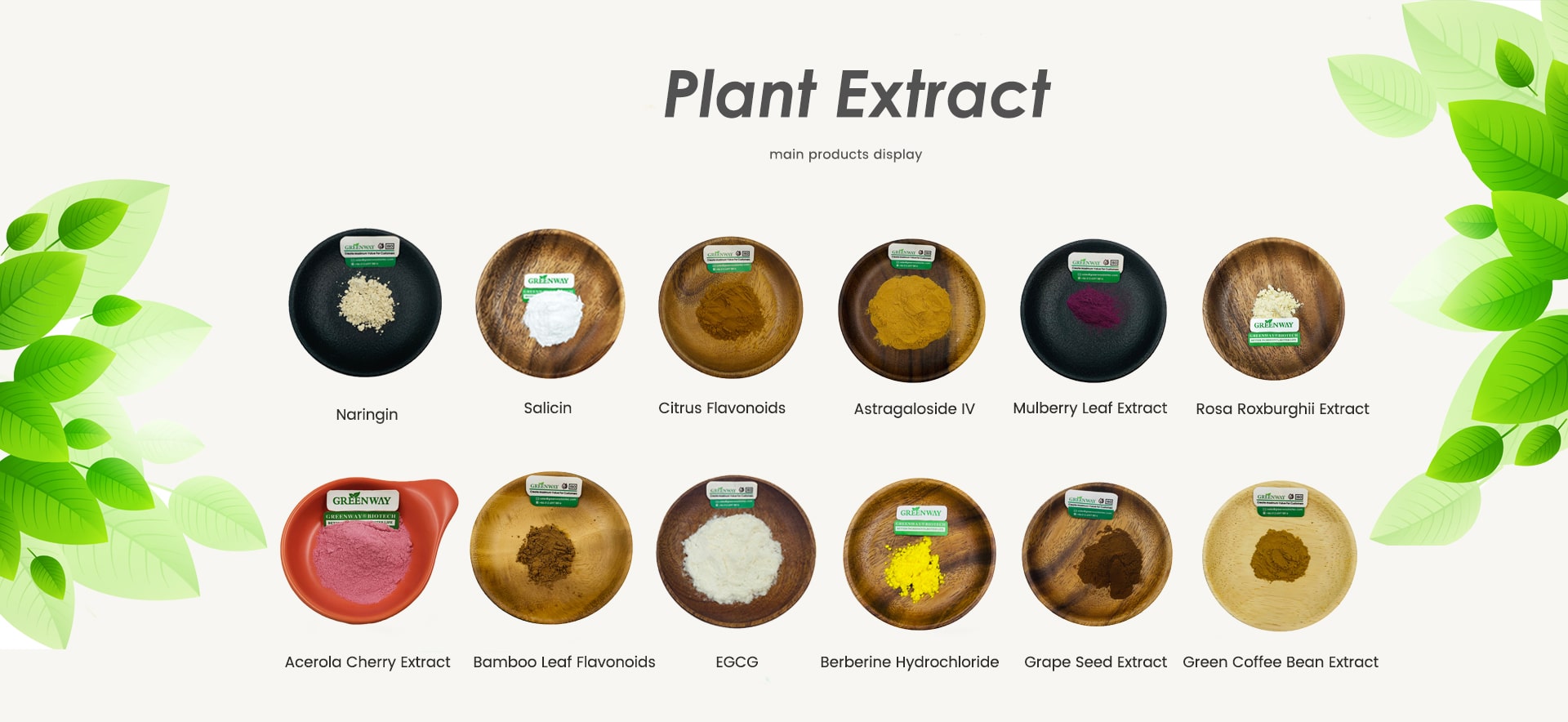

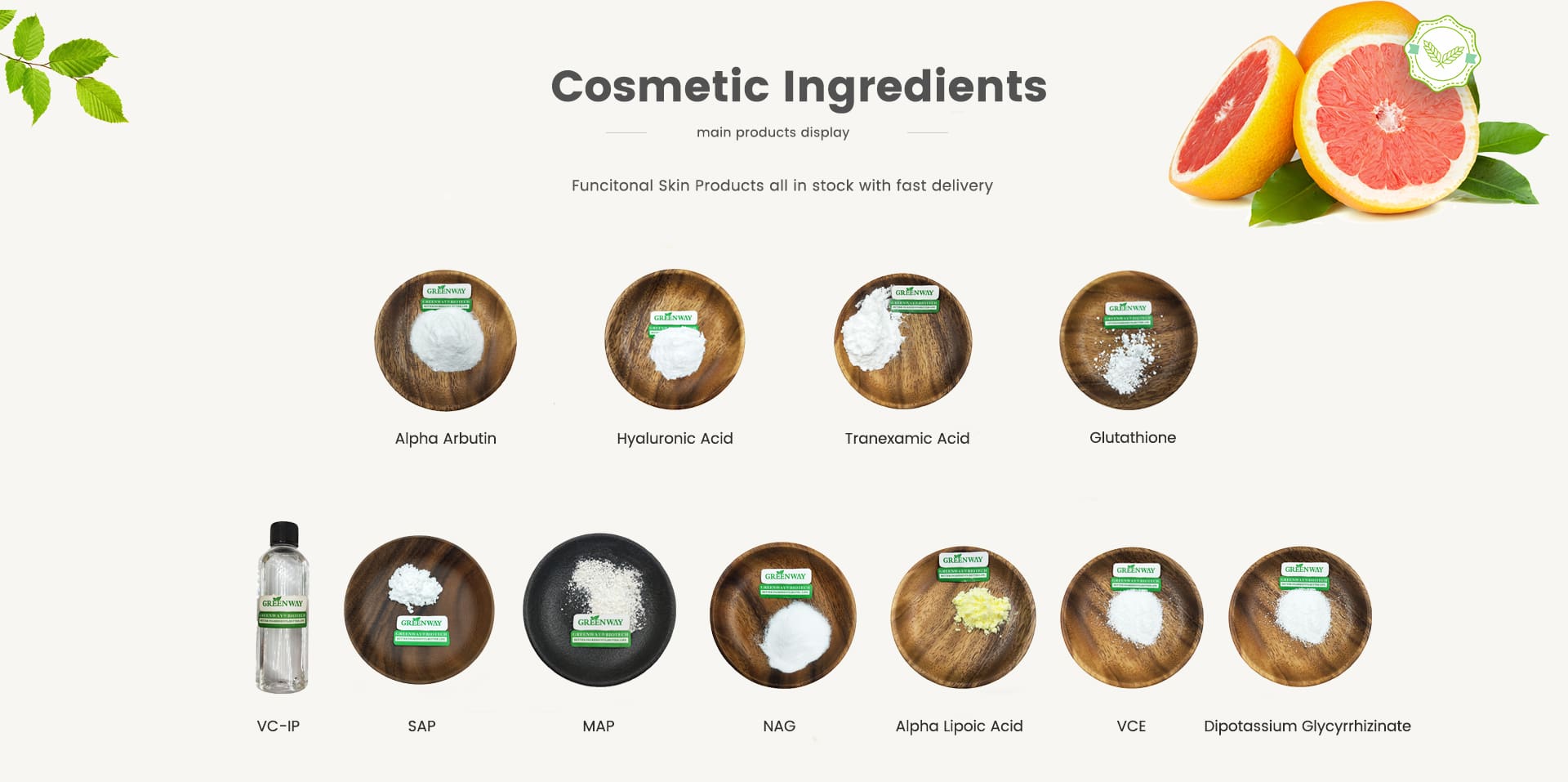
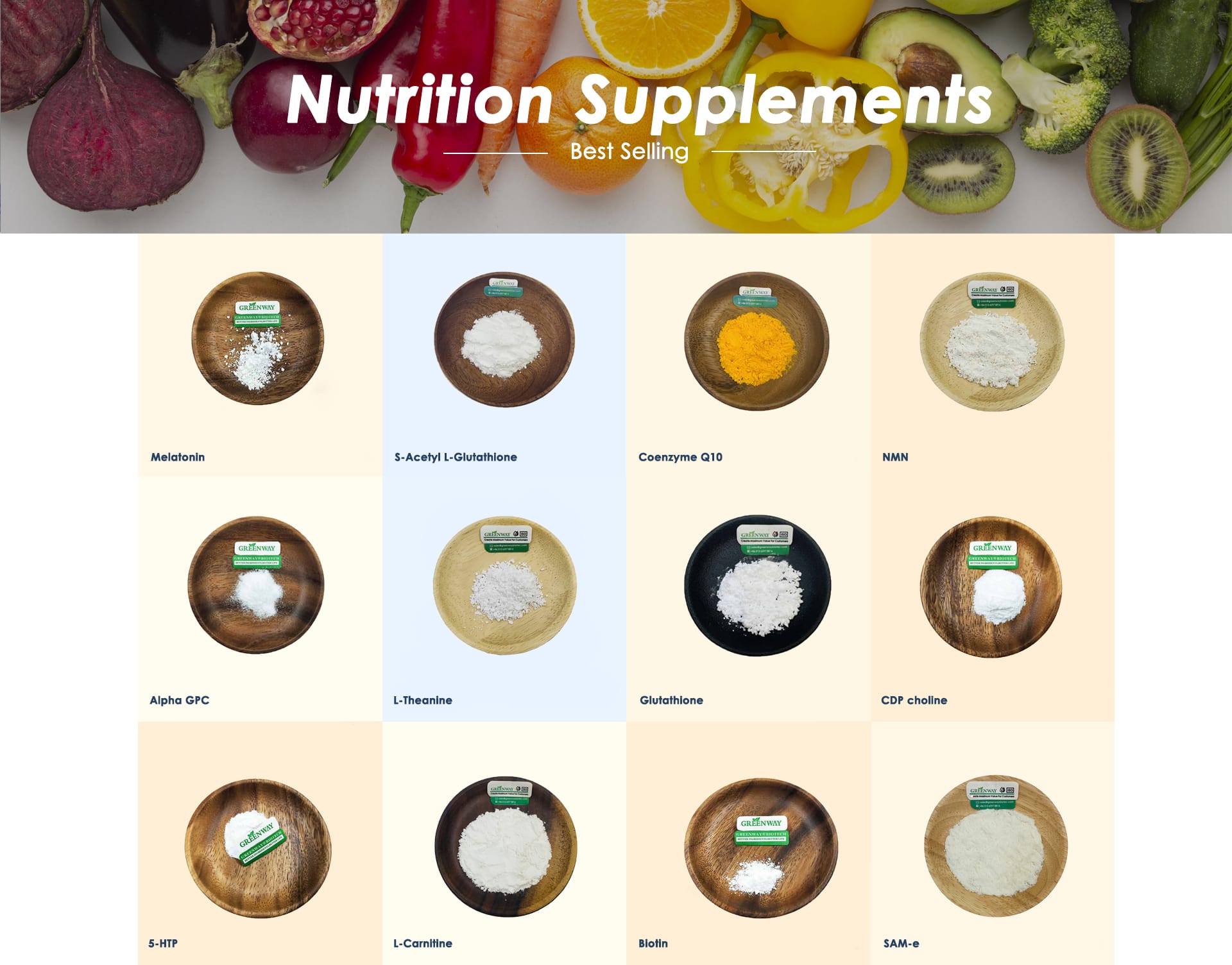



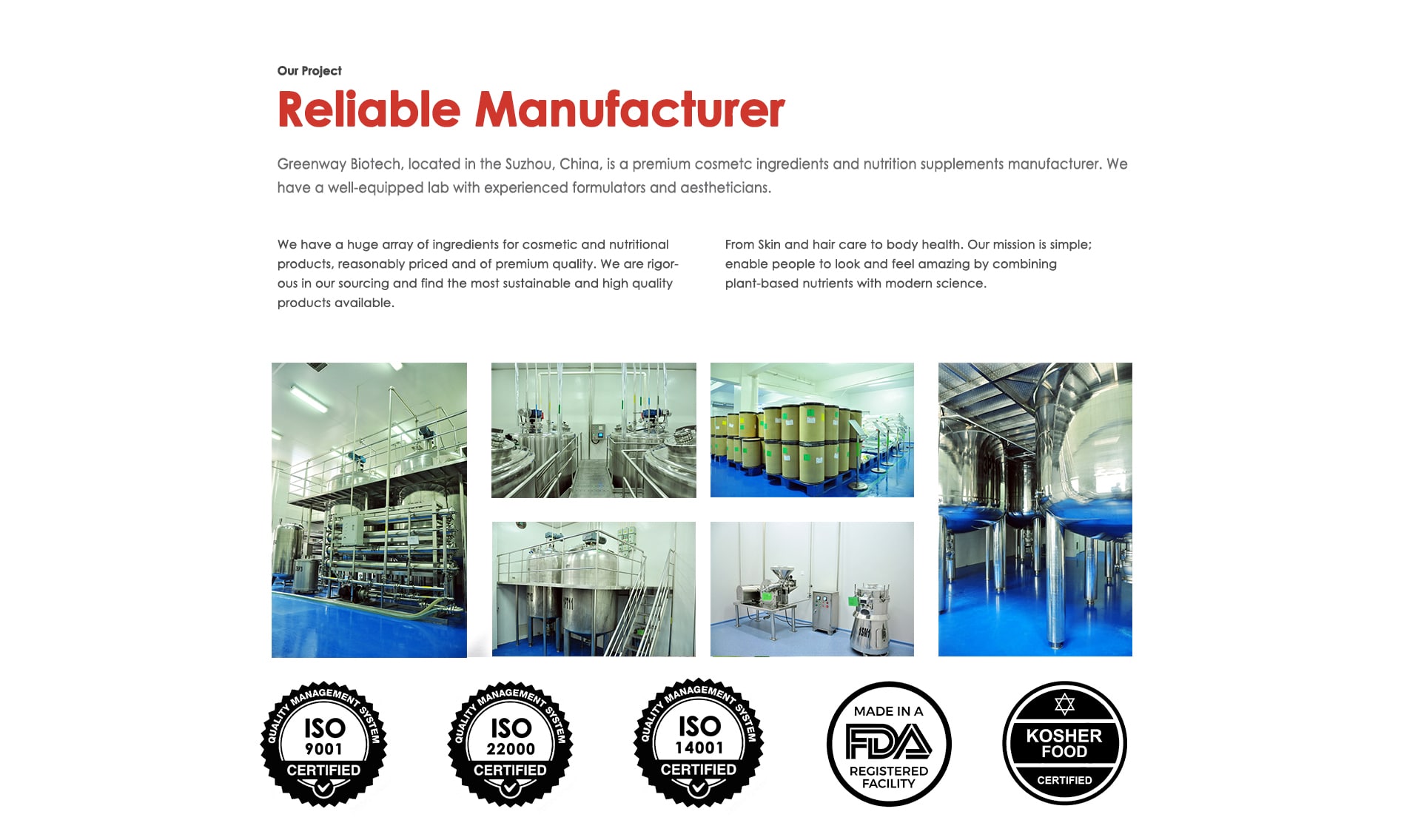
Hot tags:
Learn about our shipping methods for international cosmetic ingredients, plant extract and supplements orders. Our international carriers include FedEx, UPS, and DHL Express. Choose a shipping option that best fits your budget and needs. However, in some cases we reserve the right, without notice, to change the shipping service on your order due to high value. UPS will be switched to FedEx Ground and a signature upon delivery will be required. All orders are shipped from our warehouse in China.
We ship to over 150 countries worldwide and have over 4 years of experience dealing with international shipping documentation. Please note that shipping charges may vary from the amount indicated by the automatic shipping calculator since the weight calculated on the website may differ from the actual package weight due to the packaging material. There is no handling fee for all international orders.
Customs fees, VAT, or value added tax, and sales tax are typically charged by the government of your country and must be paid by the customer once the package arrives. We cannot determine what these fees will be. We recommend that you check with your local customs office or post office for details on how these charges are assessed and applied. For customs clearance, a customs broker is usually needed who may charge you a brokerage fee. Packages may be held up in customs for a few days and will delay delivery.


Worldwide Expedited: offers customs-cleared, day-definite delivery to more than 220 countries and territories in two to five business days.
Worldwide Express: this service offers guaranteed delivery in 1-3 business days depending on the destination. Service is available in 185 countries and territories.
Worldwide Saver: offers guaranteed afternoon delivery in 1-3 days for your international shipments. Next business day delivery to Canada, two business days to Europe and Latin America, and two or three business days to Asia. Service is available in 215 countries.

DHL Express Worldwide: DHL offers exclusively express shipping services around the globe. Slower shipping services that take longer than four to five days are not available with DHL. The Express Service is a time-sensitive service with proactive delivery notification available on request. Delivers by the end of the next possible business day. Intercontinental shipments usually take three days.

